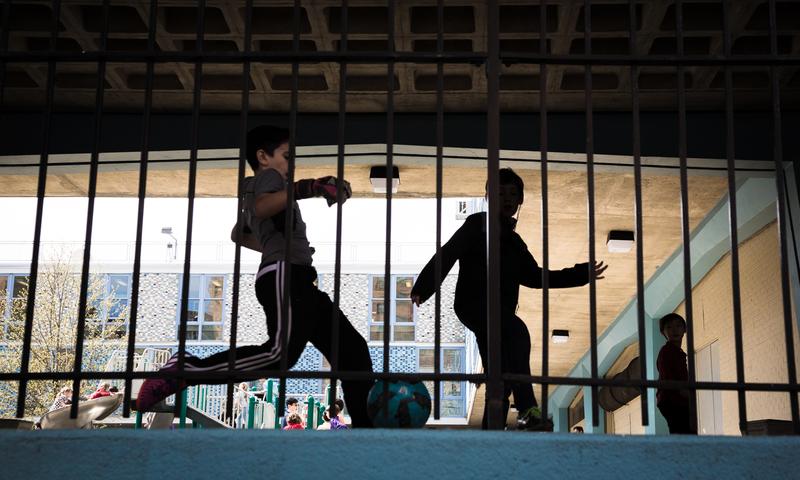
This is the third segment in a three-part series. In Part One, we hear from a transgender child, Q Daily, and his family about his transition to identifying as a boy. In Part Two, we go to school with Q to hear from teachers and his peers.
Children test boundaries all the time. That's part of their job: to figure out the rules of their world, and understand how they fit in. It applies to gender roles and identities, too.
We reported this week on Q Daily, a third-grader in Brooklyn, who was born a girl and now identifies as a boy.
To learn more about transgender children, and how all kids may test gender rules, WNYC's Soterios Johnson spoke with Jean Malpas, a psychotherapist and director of the Gender and Family Project at the Ackerman Institute for the Family.
Listen to an edited version of their conversation, or read the Q and A.
Just about all kids explore gender and gender roles, but what's different, psychologically, for children who come to the conclusion that they're not comfortable with their biological sex?
Yes, gender fluidity and exploration of gender roles is a normal phase of child development. What’s different for transgender children is that they experience a profound distress about the gender that was assigned to them based on their biological sex. So, we call that gender dysphoria.
And that distress is what we call persistent, consistent and insistent. It’s persistent over time. It’s not something that just shows up for a few weeks and goes away. It’s consistent in different contexts and relationships. And it’s also very insistent. They are very, very passionate about it. It’s not something that they take lightly or that is going to go away again in a few weeks. It is really core to who they are.
What's the parents' role in allowing children to explore, and express themselves the way they want?
Hopefully, parents understand that we all have a gender journey. What we often say to parents is: let them lead. You can’t make or break your child’s gender identity. But you can make it harder or easier for them to tell you and show you who they are.
But, you’re still in charge. You’re still the parent. You’re choosing the safest roads and the safest turns and decisions to make that possible and safe.
You say we all have a gender journey, but for a lot of people who don’t have transgender feelings they might not understand what the child is going through. They might not understand that we all have a journey. What advice do you give to parents to help them understand what their kids are going through?
That’s true. I think that when the gender identity that you have — the gender you identify with is the same as the gender that was assigned to you at birth — you don’t realize that for some people there’s a discrepancy. There’s a discomfort. So, I think that’s the first opportunity to learn that parents have, that actually that’s not always the case for everybody and that’s okay. That’s really okay to let a child identify what kind of girl, what kind of boy they are. And that the best thing they can do for them is really make sure that the environment is safe and that the message that they get is that they are okay whoever they are. They’re lovable, they’re beautiful.
How should parents talk to siblings of transgender kids?
That’s really important. When a child transitions, everybody transitions along with them. I think the best way is to talk very simply. I think that actually kids understand gender and gender diversity better than adults. They’ve been maybe less socialized in it for less amount of time. And there are very simple ways to tell that to a kid and they get it. They just want to know what name to call their sibling and what pronoun to use and how to refer to them in the world.
The large majority of children who identify as transgender or express issues with the gender assigned at birth will not continue to do so into adolescence and adulthood. Can you talk about how a child could have such a strong sense of identity as to want to change genders, but then not have that feeling persist?
What we see is that those who were actually maybe gender explorers or gender-fluid kids or gender-expansive kids might have explored gender roles and have explored gender outside of the pink and the blue box and once puberty comes in, they understand that actually they are not uncomfortable with their body. They’re just sort of redefining gender roles. However, the kids who have been gender dysphoric for a long period of time, when puberty comes in most often it confirms that their body is going in a direction that they don’t want to go into and increases that gender dysphoria.
